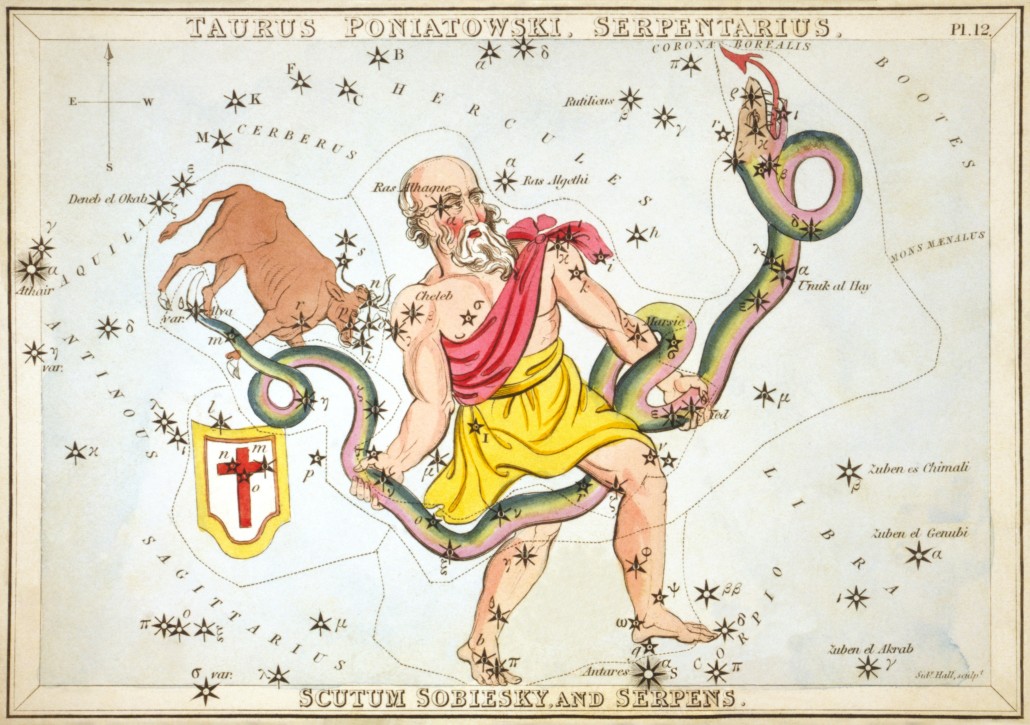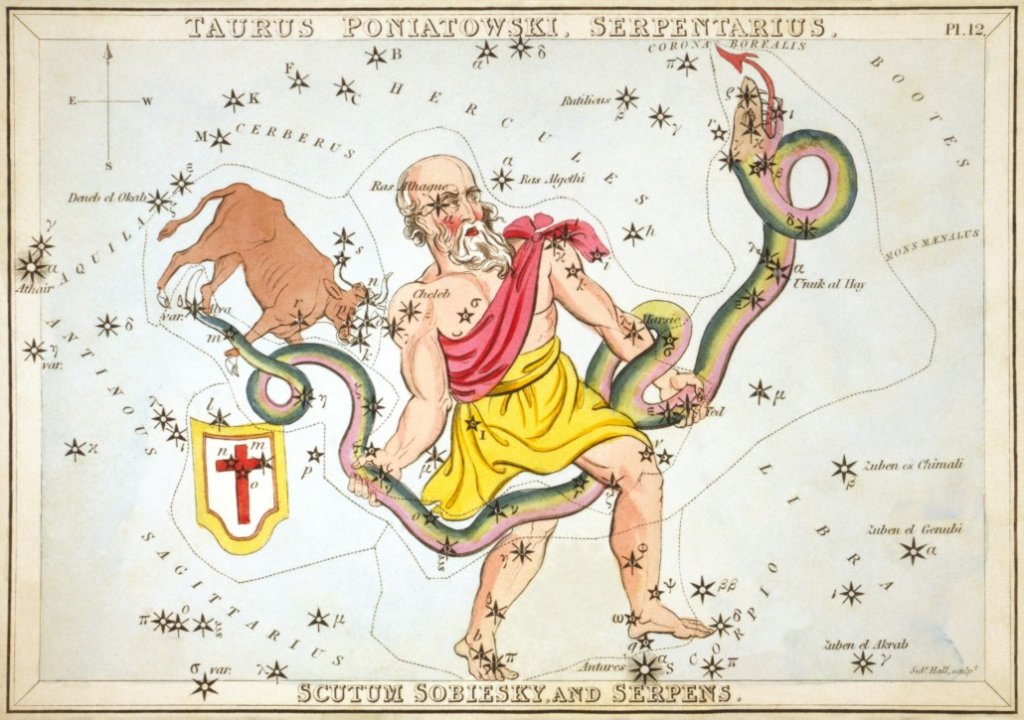

The most famous constellations (other than perhaps Orion and the Big Dipper) are the Zodiac constellations. These are twelve constellations that lie along the ecliptic, which is the apparent path the Sun makes through the heavens over the course of a year. Since the Moon and planets follow paths that are within a few degrees of the orbital plane of the Earth, they too appear to travel through the constellations of the Zodiac. For this reason they are not just constellations, but astrological signs. According to astrology, the Zodiac constellation the Sun was in at the time of your birth influences your life, hence the proverbial pick up line “hey, baby, what’s your sign?”
Much of early astronomy stems from astrology and its effort to calculate the ways in which the Sun, Moon and planets can affect our lives. Since the Sun and Moon can be used to determine the seasons and cycles of nature, it was reasonable to see if the planets also play a role. Given the ease with which humans assume a pattern when there is none, astrology rose to a place of importance, and many prominent early astronomers were also astrologers. Astrology is still used by many today, despite the fact numerous studies have shown that the predictions of astrology are no different than random chance, such as the famous experiment by Shawn Carlson published in Nature back in the 1980s.

The Zodiac constellations used today were first established more than 2000 years ago, and since then the precession of the Earth has shifted the path of the ecliptic. As a result, the time when the Sun passes through each constellation is about a month behind the designated Zodiac times. There are also now 13 Zodiac constellations, as defined by the path of the Sun. After leaving Scorpio (Scorpius to astronomers) and before entering Sagittarius, it passes through a constellation known as Ophiuchus.
So if someone asks you about your sign, try saying Ophiuchus to see how they react.
From Quarks to Quasars is two people, Jaime and Jolene. We want to make the world a more sciencey place. We’re doing that, but with your help, we can do even more.
FQTQ takes a lot of time, money, and effort. Here, you can support us, get to know us, and access extra content:
Provided by Brian Koberlein at One Universe at a Time.